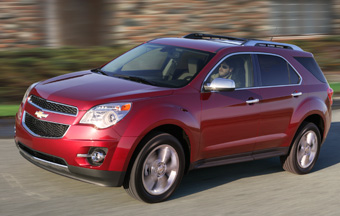
MONTICELLO, NY – General Motors Co. doesn't need to open more plants, despite achieving production rates of more than 100% capacity at some operations and nearing full output in others, says Mark Reuss, president of GM North America.
“We don't have to make that call now,” he says. “We have to be really careful with that.”
The auto maker has other innovative ways to increase production, Reuss tells Ward's in an interview here. “There are a lot of other options than building new plants.”
One current example, he says, is shipping extra Chevrolet Equinox bodies from GM's Ingersoll, ON, Canada, plant to the nearby Oshawa facility to expand output of the cross/utility vehicle that is down to a 15-day supply.
In addition, GM kept nine of 11 assembly plants in the U.S. running during the industry’s traditional 2-week break in July. Most of the auto maker’s stamping and powertrain facilities remained open to support production. GM said at the time it hoped to build an additional 56,000 vehicles by avoiding the annual shutdown.
Reuss credits the auto workers’ unions for cooperating with the company to squeeze maximum production out of existing plants.
However, GM Chairman and CEO Ed Whitacre, at the annual CAR Management Briefing Seminars in Traverse City, MI, earlier this month, was quoted saying the auto maker is considering reopening one of its shuttered plants.
One possibility would be the former Saturn facility in Springhill, TN, which has been put on standby.

But production is not the only concern. Reuss says product mix in the U.S. is likely to change as auto makers strive to meet coming mandated fleet fuel-economy regulations.
“I don't think anyone can sell the amount of large vehicles they do now in the years leading up to 2016,” he says, even though GM executives agree consumers still want big vehicles. “Many people are used to (them),” he says.
“In other countries, people get the job done in other ways. I would never come out and say what we’re going to do (to meet that demand) in front of our competition,” and the changes won't happen overnight. “In the near term, we're going to have to compete in the bigger-vehicle (segment).”
Future solutions could include a new generation of hybrids. And GM's development of a new small diesel still is ongoing, he confirms.
Reuss also says GM is doing a good job of retaining customers of its recently orphaned brands, which include Pontiac, Saturn, Hummer and Saab. Dealers have performed more than 250,000 oil changes in a recent month for Pontiac and Saturn owners.
Of the current 4-brand lineup, Buick now has a 50% conquest rate, he says. “But we need to get a lot of new buyers too.”
Reuss isn’t worried, noting GMC is one division determined to draw new customers, especially younger ones.
Indeed, despite the constraints posed by more demanding fuel-economy regulations in coming years, GMC remains an important asset to the company, he says, while admitting the division needs an expanded portfolio to attract those younger buyers.
Although Reuss doesn’t say so, one hint could be the Granite concept vehicle, which was revealed by GM at last year’s North American Auto Show in Detroit. The concept is about 2-ft. (0.6 m) shorter than the current GMC Terrain CUV. GM still is evaluating whether the Granite should get the green light for production.




